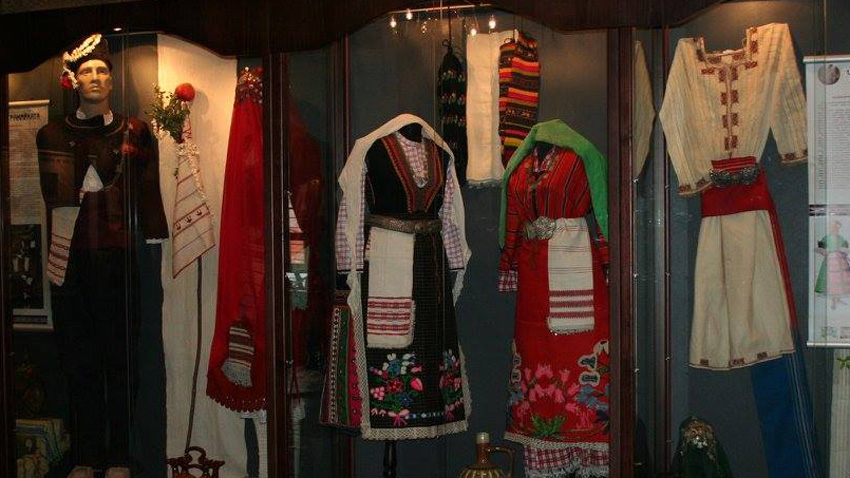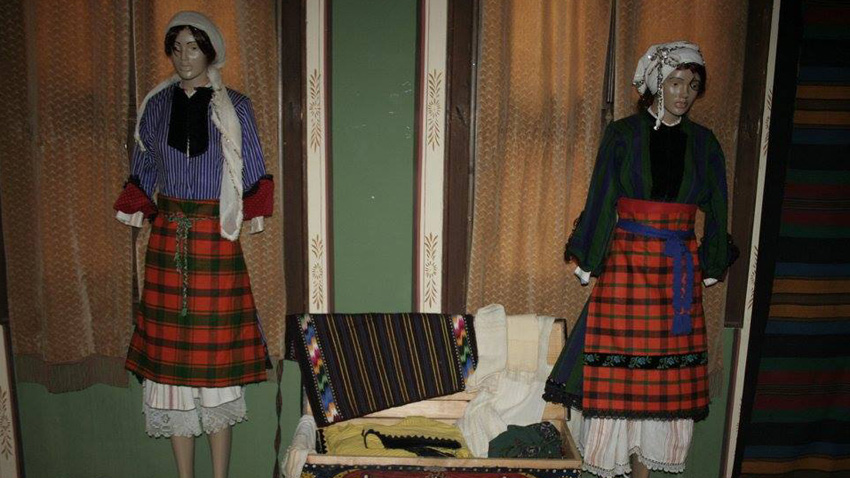The wonderful world of the women from Thrace – this is the title of an exhibition on at the Regional Museum of Ethnography in Plovdiv, part of the Autumn Arts Festival in the city. The exhibition showcases the beliefs, ideas, life and culture typical of the women from Thrace. Because it has always been women that have carried on the traditions, kept house, taken care of the children and kept the harmony in the family. Here is more about the exposition from Grozdalina Georgieva from the Regional Museum of Ethnography in Plovdiv.
“We have shown up women from different angles. From birth, through their girlhood years with all the typical rituals, then their betrothal and wedding day. From that time on they step into the shoes of mothers and grandmothers. The exhibition follows all of the cycles of life, showing what the day-to-day life of women was like as a pillar of the family, but also their magical role. Grandmothers are seen as the people who are relied upon for help, but also as healers, as the people who deliver babies. There are days during the year specifically dedicated to grandmothers and to mothers who take care of house and family. The exhibition is interesting to see in text so visitors can go back to the age-old traditions passed down from generation to generation. Women are the custodians of tradition. Let me just add that all exhibits belong to the museum.”

What kinds of women’s national costumes are on display at the exhibition?
“We have costumes that resemble pinafores as well dresses of the saya type (Saya is a dress made of thick fabric, usually decorated with braid and worn over a long shirt). These two kinds of dresses are predominant on the opposite banks of the river Maritsa. That is a very different state of affairs from Northern Bulgaria, where there are double-apron dresses and the only differences are in the way the costumes are made and in the decoration. In this case we have dresses that are completely different even though the only thing that separates them is a river.”
Visitors to the exhibition on Gallery and Museum Night in Plovdiv were able to don different kinds of national costumes, aprons and headscarves and have their pictures taken.
The Regional Museum of Ethnography in Plovdiv is the second biggest museum of this kind in the country. It was founded in 1917 and since 1938 has been housed at the Kuyumdjieva house – a monument of culture of national significance.

The museum has a standing exposition as well as a calendar of thematic exhibitions, but it also co-organizes and hosts different kinds of traditional festivals (folklore, chamber music, classical music), concerts, fashion shows and plays. The exhibition dedicated to the wonderful world of women is on until 15 October. A new exposition opens on 17 October and it is again devoted to women in ethnography – “Embroidery – the treasure created by women in Bulgaria.”
English version: Milena Daynova
Photos: courtesy of Regional Museum of Ethnographyр PlovdivEsther Willems from the Netherlands continues to attract people from different cities and nationalities to her club for Bulgarian folk dances, established in The Hague and named "Zora". It was founded in 2017 and then 13 people..
In the middle of August in Kyustendil, Southwestern Bulgaria, the "Panagia - Raising of the Bread" holiday takes place. The holiday is directly related to the church holiday "Assumption of the Blessed Virgin Mary", marked on August..
A three-day embroidery festival takes place in the square of the village of Vardim near Svishtov, the organizers reported. At its core, the festival promotes a particularly colorful part of our lifestyle and traditions -..

+359 2 9336 661
